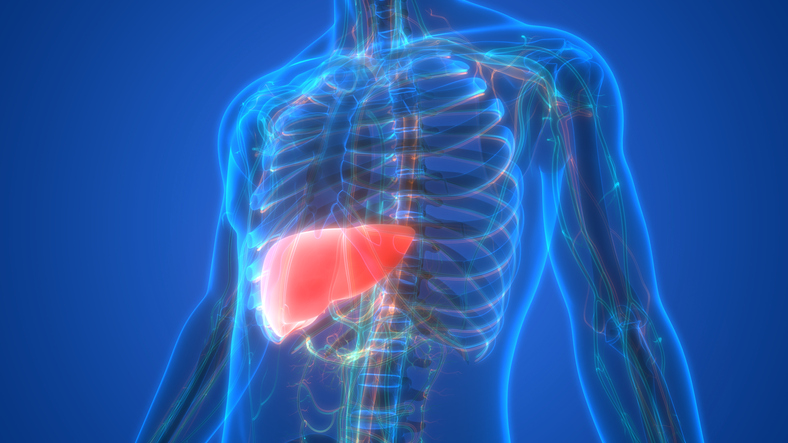CHOLECYSTECTOMY (Gallstone & Gallblader Surgery)
CONTACT US TODAY!
Submit your information below and speak with a representative.
CHOLECYSTECTOMY (Gallstone & Gallblader Surgery)
CONTACT US TODAY!
Submit your information below and speak with a representative.
Gallbladder Surgery or Cholecystectomy: At a Glance
A cholecystectomy (Koh-luh-sis-TEK-tuh-me) is a surgical procedure for the removal of the gallbladder-a pear-shaped internal
organ placed just below your liver on the upper region of your stomach. Your gallbladder functions, collecting and storing bile-a kind
of a digestive fluid produced in the liver.
A cholecystectomy known as a common surgical procedure for the removal of the gallbladder carries a lesser amount of
complications. In most cases, the surgeon allows going home on the day of the cholecystectomy surgery.
A cholecystectomy is most commonly performed by inserting a tiny camera along with the special surgical equipment through the
four small incisions to carry out the mission of removing the gallbladder. Doctors call this surgical procedure as laparoscopic
cholecystectomy.
In some rare cases, one large incision may be created to remove the gallbladder. It is known as Open Cholecystectomy.

Products and its Offerings
Why is it carried out?
Cholecystectomy is commonly performed to treat gallstones and the complications they have created. Your doctor can recommend
undergoing the surgical procedure with small cuts of cholecystectomy, when the gallbladder is removed, if you develop the enumerated down complications:
- Gallstones in the gallbladder (cholelithiasis)
- Gallstones in the bile duct (choledocholithiasis)
- Swelling in Gallbladder (cholecystitis)
- Large gallbladder polyps
- Pancreas inflammation (pancreatitis) due to gallstones
Potential Risks
The gallbladder is a small organ, and a cholecystectomy carries a minute level of complication if it develops. Here are those:
- Bile Leak
- Bleeding
- Infection
- Injury to the nearby regions such as the bile duct, liver, and small intestine
- Risks of general injected anesthesia instanced as blood clots and pneumonia
The risk of the complication varies on the overall health of the patient, the common bile duct, and the reasons to undergo cholecystectomy.

Preparation for the Surgical Procedure
To gear up for cholecystectomy (laparoscopic gallbladder surgery), your surgeon would ask to do the followings:
- Eat nothing on the eve of the surgery: You may just sip a few drops of water with your medication. However, eating and
drinking at least four hours before the surgery would be avoided. - Stop Consuming certain medications and supplements: Educate your doctors about all the supplements and
medications you take. Continue taking all the prescribed medicine proposed by your doctor. At times, your doctor may
recommend stopping taking certain medications and supplements because of jeopardizing the bleeding.
Clothing and Personal Items
After the accomplishment of the surgery, most patients can go home on the same day. However, at times, as a caveat, the patients
should spend one or more nights in the hospital to evade any untoward complication. So, thoughtful planning is required if you need
to spend a couple of nights by bringing certain things such as toothbrushes, comfortable clothing, and books, and magazines to
pass your time during your stay at the hospital.
Other Precaution
Look for someone, weather be a friend or a family member, that can drive you home. Ask that person to stay close with you the first
night of the surgery.
What can be expected before the surgery?
Before the surgery
A cholecystectomy is performed upon injecting the general anesthesia. So, the patient would not be conscious during the surgery.
After injecting the general anesthesia, using one of the veins in your arms, the effect of this medicine will show its result in a while.
Post that, the health care team will insert a tube, passing through the throat to ease the breathing of the patient. After that, the
surgeon will carry out the surgical procedure either through laparoscopy or open procedure, depending upon the situation.
In the course of Surgical Procedure
Understanding the situation, the surgeon will execute one of the two surgical techniques.
Minimally invasive (laparoscopic) cholecystectomy
During laparoscopic surgery, upon creating the four small incisions, a small tube armed with a tiny camera is inserted through one
of the incisions. The surgeon executes this surgery while watching the laparoscopy monitor, utilizing the equipment which has been
inserted through the other incisions with the mission of removing the gallbladder.
Post this procedure, the patient may undergo an X-ray or ultrasound if the surgeon is worried about the likely gallstones or other
unattended problems in the bile duct. Then, the patient is brought to the recovery or ICU room under a vigil observation after the
incisions are sutured. This whole procedure takes around one or two hours to complete.
Laparoscopic surgery is not an appropriate option for every individual. In some cases, the surgeon begins with the laparoscopic
surgical procedure, but end with carrying out an open surgery because of scar tissue from previous operations or other unexpected
complications.
Traditional (open) cholecystectomy
In the course of an open cholecystectomy, the surgeon makes a 6-inches (15-centimeter) incision in the abdomen below the rib on
the right side. Upon pulling back the muscle and tissue in order to create the space, the surgeon removes the gallbladder.
The incision would be stitched down. Post that, the patient would be carried to the recovery or ICU room under close observation.
Like laparoscopic surgery, an open cholecystectomy takes one or two hours to furnish its procedure.
After the surgical procedure
As it is said beforehand, the patient would be brought to the recovery or ICU room to keep a close observation till the time the effect
of injected general anesthesia recedes down. Post that, the patient would be shifted to a hospital ward for the recovery. Recovery
varies depending upon the procedure.
Laparoscopic Cholecystectomy: Patients are usually discharged from the hospital on the same day when the surgery was
performed. However, in some cases, one night’s stay at the hospital is required. Generally, the patient can expect to go home
when he/she is capable enough to eat and drink without any pain and walk without any support. Full recovery takes around a
week.
Open Cholecystectomy: The patient spends two to three days in the hospital to recover before he/she gets discharged. A time of
four to six weeks would be taken for the full recovery.
Results
A cholecystectomy can relieve the pain and discomfort of the gallstones almost permanently. Conservative treatment such as a
major change in the dietary fails to stop the gallstones from happening again. In most of the cases, cholecystectomy will obstruct
the gallstones to come back again.
Most patients don’t encounter the problems related to digestion after the cholecystectomy treatment. The gallbladder is not the
essential organ to have healthy digestion. Some patients face the problem of loose stool or motion, which becomes alright after a
while. The patients should discuss with his/her respective doctor if there are any changes in his/her bowel habits or new symptoms
after the surgical procedure.
How quickly a patient can resume his/her normal life utterly depends upon the surgical procedure the surgeon has used along with
the patient’s overall health. People who undergo laparoscopic cholecystectomy may resume their work just in a couple of days.
Whereas, people who undergo open cholecystectomy may need a week or more time for the resumption of their work.
CALCULATE YOUR BMI
BMI is a measurement of your body fat based on your height and weight. Knowing your BMI can help you understand whether you fall into the categories of Overweight or Obese.
CONTACT US TO SPEAK DIRECTLY WITH A REPRESENTATIVE.
BMI CALCULATOR CHART
| BMI | WEIGHT STATUS |
|---|---|
| Below 18.5 | Underweight |
| 18.5 – 24.9 | Normal |
| 25.0 – 29.9 | Overweight |
| 30.0 and Above | Obese |

Ask Us A Question
(123) 456-789
Here at WLLA, we are prepared to assist you on your journey health and beauty. Take the first step in living your life with confidence by contacting us and scheduling an appointment. By the end of your appointment you will gain a treatment plan customly made for you. Begin your journey by calling us today.
CONTACT US TODAY!
Submit your information below and speak with a representative.



